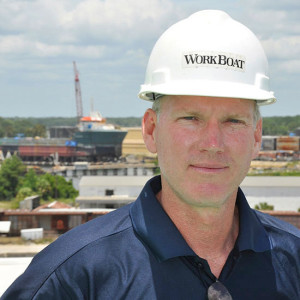Offshore oil and gas operators in the Gulf of Mexico are resuming normal operations following Tropical Storm Michael. The Bureau of Safety and Environmental Enforcement (BSEE) Hurricane Response Team is monitoring operators’ activities. The team will continue to work with offshore operators and other state and federal agencies until Gulf of Mexico oil and gas operations return to normal. This is the final update (Tuesday, Oct. 16) of evacuation and shut-in production statistics for Tropical Storm Michael.
Based on data from offshore operator reports submitted as of 11:30 a.m. CDT today, personnel have returned to all 687 manned platforms in the Gulf of Mexico. Production platforms are the structures located offshore from which oil and natural gas are produced. Unlike drilling rigs which typically move from location to location, production facilities remain in the same location throughout a project’s duration.
Personnel have returned to all of the previously evacuated non-dynamically positioned rigs. Rigs of this type currently operating in the Gulf can include several types of offshore drilling facilities including jackup rigs, platform rigs, all submersibles and moored semisubmersibles.
All dynamically positioned rigs that moved off location due to the storm are back on location. Dynamically positioned rigs maintain their location while conducting well operations by using thrusters and propellers, and the rigs are not moored to the seafloor; therefore, they can move off location in a relatively short timeframe. Personnel remain onboard and return to the location once the storm has passed.
As part of the evacuation process, personnel activate the applicable shut-in procedure, which can frequently be accomplished from a remote location. This involves closing the sub-surface safety valves located below the surface of the ocean floor to prevent the release of oil or gas. During previous hurricane seasons, the shut-in valves functioned 100% of the time, efficiently shutting in production from wells on the Outer Continental Shelf and protecting the marine and coastal environments. Shutting-in oil and gas production is a standard procedure conducted by industry for safety and environmental reasons.
From operator reports, it is estimated that approximately 7.7% of the current oil production in the Gulf of Mexico remains shut-in. It is also estimated that approximately 3.5% of the natural gas production in the Gulf of Mexico remains shut-in. The production percentages are calculated using information submitted by offshore operators in daily reports. Shut-in production information included in these reports is based on the amount of oil and gas the operator expected to produce that day. The shut-in production figures therefore are estimates, which BSEE compares to historical production reports to ensure the estimates follow a logical pattern.
Since the storm has passed, operators are inspecting their facilities. Once all standard checks have been completed, production from undamaged facilities will be brought back on line immediately. Facilities sustaining damage may take longer to bring back on line. A total of three platform damage reports have been submitted, citing missing grating.
Total Percentage
of GOM
Platforms
Evacuated 0 0
Rigs
Evacuated 0 0
DP Rigs
Moved-off 0 0
Total shut-in Percentage of GOM Production
Oil, BOPD
Shut-in 130,138 7.7
Gas,
MMCFD
Shut-in 90 3.5
This survey information is reflective of 30 companies’ reports as of 11:00 a.m. CDT today.




